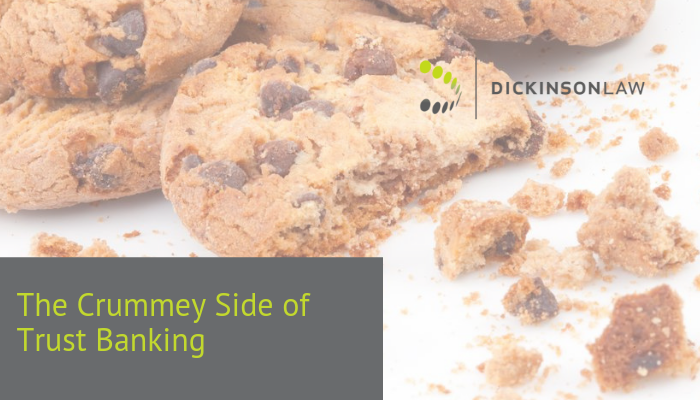The Crummey Side of Trust Banking

Posted on 10/04/2018 at 01:14 PM by David Gonzales
This is the first in a series of three blogs dealing with bank trustee risk and Irrevocable Life Insurance (Crummey) Trusts.
Crummey Trusts represent a disproportionate risk in a bank’s trust department. They contain few assets and many odd provisions. In this series of three blogs, I’ll examine the pitfalls of managing Crummey Trusts as a bank trustee and share some basic strategies to minimize the risk involved
Irrevocable Life Insurance Trusts, also known as Crummey Trusts for the name of the case that launched their popularity are a small niche of the greater trust world Crummey v. Commissioner of Internal Revenue, 397 F.2d 82 (9th Cir. 1968). Their primary goal is to provide liquidity for an estate for estate tax purposes by using existing annual gift tax exemptions. This means the customers most likely to have a Crummey trust are customers with a high net worth. Frequently, settlors who use Crummey trusts have banks act as trustees due to the demands of trust administration.
What are the basics of a Crummey trust?
First, a settlor establishes an irrevocable trust usually with enough cash to make an initial insurance premium payment. The trust must contain a provision allowing for certain beneficiaries to demand distribution of any gift made to the trust. The demand provision must not be illusory [fake], and there can be no agreement between the settlor, demand beneficiaries, and/or the trustee to prevent the beneficiaries from exercising their demand powers.
Next, the trust purchases a life insurance policy on the settlor(s) with a death benefit large enough to provide liquidity for the projected estate tax. Usually the policies are set up to have premiums paid on an annual basis. The trust will be both the owner and the beneficiary of the life insurance policy.
How does it work?
Each year before the premium is due the life insurance company will send a statement with the premium amount to the trust in care of the trustee. The trustee then notifies the settlor the amount of gift to the trust required to pay the insurance premium. The settlor, hopefully quickly, sends the gift to the trustee.
Before the trustee can pay the premium the trustee notifies each demand beneficiary that (1) a gift has been made to the trust, (2) the amount of the gift, (3) that the beneficiary has a right to demand his share of the gift, and (4) the amount of time the beneficiary has to make the demand. Ideally the trustee should wait until the demand period has passed before the trustee pays the life insurance premium.
What are the common pitfalls?
The administration of this particular type of specialty trust is difficult even when the trust document is clear. In cases where there are unclear beneficiaries or the demand period is not clearly defined a legal opinion is necessary to ascertain the duties of the trustee bank. The cumbersome administration of Crummey trusts gives plenty of opportunities for an unanticipated issue creating new risk for the bank trustee. Issues involving insurance policies, trust agreement interpretation, and settlors making late gifts or no gifts at all may also create risk. Even more troublesome, a beneficiary may exercise their withdrawal right causing a chain of subsequent problems.
Bank trust departments handling Crummey Trusts are likely to encounter these and other issues that require legal expertise for proper resolution. A legal analysis from a trusted attorney analyzing trust agreement provisions can provide your trust department with piece of mind that the issue was handled properly, therefore reducing the risk of specialty trust agreements like Crummey trusts.
Categories: Trusts & Estates Law, Banking Law
Questions, Contact us today.
The material, whether written or oral (including videos) that is posted on the various blogs of Dickinson Bradshaw is not intended, nor should it be construed or relied upon, as legal advice. The opinions expressed in the various blog posting are those of the individual author, they may not reflect the opinions of the firm. Your use of the Dickinson Bradshaw blog postings does NOT create an attorney-client relationship between you and Dickinson, Bradshaw, Fowler & Hagen, P.C. or any of its attorneys. If specific legal information is needed, please retain and consult with an attorney of your own selection.






